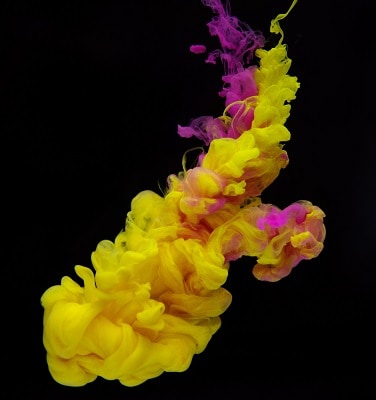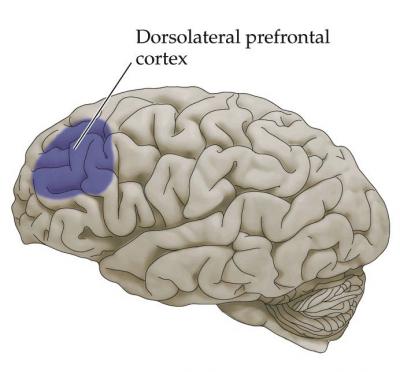
After having practised meditation, various breathing methods, visualization and mental focusing techniques, I became aware of something referred to in neuroscience as “flow state”. This sounded intriguing so I took some time to research what it is all about, how to get into flow state and what the benefits of it are.
Neuro science
The concept of being “in the zone” caught the attention of scientists. In particular, neuroscientists, and so they began to study it. One of the questions they would have liked to answer was “can anyone achieve being in the zone at will?”. The answer to that question was something along the lines of “it depends”.
They found that it is possible for anybody to be “in the zone” and that flow state exists across any skill. One of the key components of flow state is the repetition of skill or action. So this would mean that even a beginner can enter flow state via the repetitive process of practice. The beginner stage is where the neural pathways are being formed. More advanced and skilled individuals have those neural pathways more deeply established and therefore can enter flow state quicker while performing their specialist activity.
The neuroscientists have actually quantified flow state and found a way to measure what they term “psychological flow”. Here is a link to the neuroscience perspective on the methods they discovered to make the measurements.
Here is a video of neuroscientist Brett Wingeier explaining in digestible terms how flow state works. He brings you up to speed with the basics and showcases a technology that has been developed which helps your brain to optimize neural pathways and improve performance.
Zen meditation
Flow state has emerged recently as something of a buzz-word in popular psychology. Sports psychologists and neuroscientists are all over the concept as a new, exciting, potential-filled field of study. In actuality, the elusive “zone” has been known about and utilized for at least thousands of years. From Yogi’s in India to Samurai in Japan, across the Asian continent since the earliest known history, the idea of flow seems to have always existed.
Central to the concept of flow from the Eastern traditions is the focused and un-distracted state of mind known in Japanese Zen as “mushin no shin” which translates to “mind of no mind”. While we in the West tend to view flow state as something to be realized during moments of action, in Zen this state is cultivated through stillness and sitting meditation. This state of mind then transfers to all activity.
The paradox of entering the Zen flow state is that it is extremely simple, yet extremely elusive to achieve. The simple part is the instruction to sit quietly and calm your thoughts. Sounds easy enough, until you actually try it. Most people struggle with just this first step, so here are some tips to get you started:
- Don’t try to “stop thinking”. Accept that you will probably still be constantly thinking, at least in the beginning.
- Instead, as your thoughts form and emerge, try to observe that happening.
- Notice when you become distracted and gently get back to your quiet sitting. Do not become annoyed with yourself for getting distracted.
- Try to focus on one thing that is happening
in the moment. For example “I am sitting”. Just focus on that onethought , you can repeat it like a mantra, e.g. “sitting, sitting, sitting…”
Repetition – the foundation of flow state
As was mentioned in the video above, repetition is a key component of the achievement of reaching flow state. It is the process of repeating a skill until it is learned and then continuing with the repetition that creates the conditions that are conducive to flow state. An action is repeated until the neurons and synapses fire in a smoother and smoother sequence, always adjusting for errors and optimizing the efficiency of the overall energy expenditure.
When an action is first being learned, a part of the brain called the dorsolateral prefrontal cortex is very active.

This is an area associated with conscious decision making. As the skill/action is repeated many times over and over, the dorsolateral prefrontal cortex becomes less and less active. The action becomes learned and decision making moves into the subconscious.
According to psychologist Mihaly Csikszentmihalyi, who is credited for coining the term “flow state”, there is a correlation between skill level, challenge level, and ease of “getting in the zone”. In order to reach the very highest skill levels in any discipline, massive amounts of repetition in practice are required. The action becomes so ingrained that it no longer requires any conscious effort to perform. When the challenge is great and the expert steps up, he or she slips easily into flow state under these conditions.
Benefits of flow state
You might be wondering, aside from being able to perform an action so expertly that you don’t have to think about it, what other benefits are there to achieving flow state and “getting in the zone”? There really are a whole host of advantages in achieving flow state. Let’s check a few out:
- Accelerated learning. Certain neurotransmitters get dumped into the brain while under flow state. These include dopamine and norepinephrine, which make you feel great and tighten the mind’s focus. Serotonin, which makes you feel happy. Anandamide, which causes the brain to make new connects and think laterally. Endorphins, which reduce feelings of discomfort and can block out pain. The combined effect of all these neurochemicals is that they move a learned experience much faster from short term to long term memory, hence the accelerated learning effect.
- Increased creativity. Artists, musicians, dancers and actors all benefit from the enhanced creativity while in flow state. It is partly due to the fact that once a technique has been mastered, the mind has more “room” to explore new avenues within the field of expertise without distraction. Added to the fact are the feelings of confidence and familiarity generated by the neurotransmitters and you have a recipe for explosive creativity.
- Reduced anxiety. During the period that flow state is in full gear, the person experiencing it has no other thought than what they are doing at that particular moment. Any thoughts or memories that might cause anxiety are diminished to the point of complete ineffectiveness. Flow state induces total contentment in the moment. This state becomes entrained the more the person enters into it. It can also carry over into day-to-day life and general anxiety levels are reduced.
- Increased productivity. You can by now probably deduce the effects of flow state within a working environment. If a worker is totally absorbed in their current job, their productivity goes through the roof. I personally often experience this when writing blog posts, or computer programs. If I can remain undistracted for a given period of time, the work almost seems to do itself. You can also enter flow state while doing simple tasks like mowing the lawn or making your supper. Usually that is when you do your best work.
Conclusion
Hopefully this article has provided some insight on what flow state is and given you some ideas on how to get into that sweet and elusive “zone”. Usually, you don’t consciously realize that you are in flow state when it happens. Though as you become more advanced at being in the zone of flow, you are able to be in flow and fully aware of your change in state at the same time.
Most people can relate to the experience of realizing that they are in flow state and suddenly the “bubble” pops. They somehow knock themselves out of it. When this happens, it’s important not to become annoyed by it, but just start from the beginning again and congratulate yourself for recognizing your own flow state.